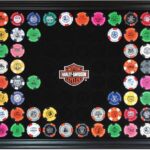I. Understanding Upcycled Green Waste: A Sustainable Approach
II. Benefits of Upcycling Green Waste for the Environment
III. Creative Ways to Upcycle Green Waste at Home and in the Community
Understanding Upcycled Green Waste: A Sustainable Approach
Hey there! Have you ever wondered what happens to all that green waste—like grass clippings, leaves, and kitchen scraps—that we generate every day? Well, you’re in for a treat! Let’s dive into the world of upcycled green waste and explore how this sustainable approach can be a game-changer for our environment and our lives.
What is Upcycled Green Waste?
At its core, upcycling refers to the process of transforming waste materials into new products of better quality or environmental value. When it comes to green waste, we’re talking about organic materials that are typically discarded, such as:
- Grass clippings
- Leaves
- Kitchen scraps (like vegetable peels)
- Branches and twigs
- Plant trimmings
Instead of tossing these items into the trash, upcycling breathes new life into them. It’s all about finding innovative and creative ways to repurpose what would otherwise be waste. Why throw it away when you can turn it into something useful?
Why is Upcycling Green Waste Important?
Upcycling green waste isn’t just a trendy buzzword; it’s a vital component of a sustainable lifestyle. Here’s why:
- Reduces Landfill Waste: When we upcycle, we keep organic materials out of landfills, where they would otherwise contribute to methane emissions—an incredibly potent greenhouse gas.
- Enhances Soil Health: By composting or reusing green waste, we can create nutrient-rich soil that helps our gardens thrive. Healthy soil means healthier plants!
- Conserves Resources: Upcycling reduces the need for new materials and resources. It’s like a win-win for both your wallet and the planet!
Getting Started with Upcycling Green Waste
If you’re intrigued and want to start your upcycling journey, there are plenty of simple ways to incorporate this into your life:
- Composting: Create a compost bin in your backyard or use a countertop compost container for kitchen scraps. This is one of the best ways to turn waste into valuable soil amendment.
- Mulching: Use grass clippings and leaves as mulch in your garden. It helps retain moisture and keeps weeds at bay.
- DIY Projects: Get creative! Turn old branches into garden stakes, or use tin cans for herb planters.
Getting involved in upcycling green waste can be both fun and rewarding. Plus, it’s a fantastic way to contribute to a more sustainable world while also flexing those creative muscles. So, grab those kitchen scraps and branches, and let’s get upcycling!
Benefits of Upcycling Green Waste for the Environment
Upcycling green waste is not just a trendy buzzword; it’s a powerful step toward creating a healthier planet. When we talk about green waste, we’re referring to organic materials like grass clippings, leaves, and food scraps. Instead of tossing these items in the landfill, why not give them a second life? Let’s explore some of the fantastic benefits of upcycling green waste for the environment!
1. Reducing Landfill Waste
Did you know that organic waste makes up a significant portion of what we send to landfills? When green waste decomposes in a landfill, it produces methane, a greenhouse gas that is far more potent than carbon dioxide. By upcycling, you help keep these materials out of landfills, which means less methane and a healthier atmosphere!
2. Enriching Soil Health
When we upcycle green waste through composting, we create nutrient-rich compost that can enrich our garden soil. This natural fertilizer is full of essential nutrients that promote plant growth and improve soil structure. Using compost can reduce the need for chemical fertilizers, which is a win-win for both our gardens and the environment!
3. Conserving Resources
Upcycling green waste can significantly reduce the resources needed for conventional waste management. Every time we divert organic waste from the trash, we save on transportation costs and the energy required to process that waste in a landfill. Additionally, by using compost in our gardens, we minimize our reliance on synthetic fertilizers and pesticides, which often require intense resource extraction and production.
4. Promoting Biodiversity
Healthy soil is teeming with life, and composting contributes to this biodiversity. When we create a thriving ecosystem in our gardens through compost, we support beneficial organisms like earthworms and microorganisms that play crucial roles in nutrient cycling. A biodiverse garden is also more resilient to pests and diseases, reducing the need for harmful interventions.
5. Saving Water
Upcycled green waste, especially when turned into compost, can help retain moisture in the soil. This is particularly beneficial in regions experiencing drought. Compost acts like a sponge, holding onto water and releasing it slowly to the plants. This means less frequent watering and healthier plants, which ultimately contributes to water conservation efforts.
6. Inspiring Community Engagement
When we engage in upcycling green waste, we’re not just making individual choices; we’re also fostering a sense of community. Neighborhood composting initiatives or garden share programs can bring people together, educate others about sustainability, and inspire collective action. There’s something incredibly fulfilling about working together towards a common goal of environmental stewardship!
In conclusion, upcycling green waste is a simple yet impactful way to support our planet. By reducing landfill waste, enriching our soil, conserving resources, promoting biodiversity, saving water, and inspiring community engagement, we’re contributing to a healthier environment for future generations. So, let’s roll up our sleeves and start upcycling—our Earth will thank us for it!
Creative Ways to Upcycle Green Waste at Home and in the Community
Upcycling green waste is not only a fantastic way to contribute to sustainability, but it also opens up a world of creativity right in your backyard or community! Whether you have a small apartment garden or access to a larger community space, there are plenty of fun and resourceful ways to give green waste a second life. Let’s dive into some inspiring ideas!
1. Composting: The Ultimate Recycling
One of the easiest and most effective ways to upcycle green waste is through composting. By turning kitchen scraps and yard waste into rich compost, you can create nutrient-dense soil for your plants. Here’s how to get started:
- Choose a Compost Bin: You can buy one or make your own using wood pallets or old containers.
- Layer It Up: Start with brown materials (like dried leaves) and add green materials (like vegetable peels) in layers.
- Keep It Moist: Ensure your compost is damp, but not soggy—think of a wrung-out sponge!
- Turn It Regularly: Aerate your compost every couple of weeks to speed up the decomposition process.
2. Green Waste Mulch
Did you know that you can use your green waste to create natural mulch? This can help retain moisture and suppress weeds in your garden. Here’s how to make your own mulch:
- Collect Your Green Waste: Gather leaves, grass clippings, and small branches.
- Shred It Up: Use a garden shredder or simply chop it into smaller pieces. This helps it break down faster!
- Apply It: Spread the shredded green waste around your plants, ensuring it’s not piled up against stems.
3. Create Natural Fertilizers
Instead of tossing those coffee grounds or banana peels, consider making homemade fertilizers! Here’s a simple recipe:
- Banana Peel Fertilizer: Soak banana peels in water for a few days. This creates a potassium-rich solution perfect for flowering plants.
- Coffee Ground Fertilizer: Mix used coffee grounds into your compost or directly into the soil. It’s high in nitrogen and encourages healthy growth!
4. Crafting and DIY Projects
Upcycling isn’t just about gardening; it can be a fun craft activity too! Here are some engaging DIY ideas:
- Pine Cone Bird Feeders: Smear peanut butter on pine cones and roll them in birdseed. Hang them outside to feed the birds!
- Planters from Old Boxes: Use wooden crates or old containers to create unique planters for herbs or flowers. Just make sure to drill drainage holes!
- Natural Dyes: Use avocado pits, onion skins, or beet scraps to create beautiful, natural dyes for fabrics.
5. Community Initiatives
Why not take your upcycling efforts to the next level? Get involved in community projects:
- Organize a Community Composting Program: Create a shared composting space where neighbors can contribute their green waste.
- Host a Workshop: Teach others how to upcycle their green waste into useful products or nutrition-rich soil.
Upcycling green waste is a wonderful way to connect with your environment and community while reducing waste. So grab those gardening gloves and get creative; every little bit helps!










Comments